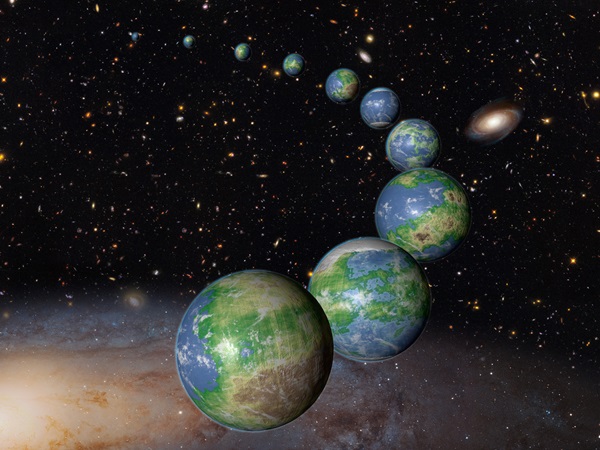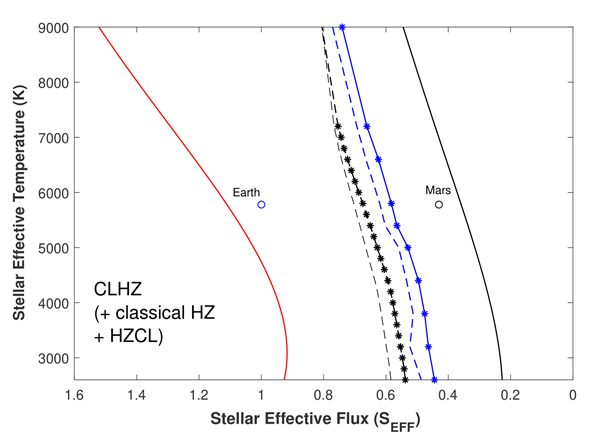This is the first study to derive N2 and CO2 respiratory limits for complex life using a combination of theory and experimental data. Using these limits, a new habitable zone for complex life (CLHZ) is derived. This CLHZ is ~35% wider than recently computed, suggesting that complex life may be more widespread than previously thought.

The habitable zone is the region around a star where large bodies of water may be stable on the surface of a rocky planet. Although space missions use the habitable zone to find potentially habitable exoplanets, classical definitions make no clear distinction between simple and complex life.
Times have changed, however. Ramses Ramirez of the Earth-Life Science Institute at the Tokyo Institute of Technology has done exactly this, deriving a new habitable zone for complex life (CLHZ) which applies to mammals (including humans) and other air-breathing animals (e.g. birds, reptiles). Using a combination of laboratory results and theoretical predictions, this new CLHZ revises previously estimated respiratory CO2 limits and provides the first estimated limits for N2 respiration. Ramses found that complex life on Earth cannot breathe in air with CO2 and N2 pressures higher than ~0.15 bar and 3 bar, respectively, decreasing to ~0.1 bar CO2 and 2 bar N2 for newborns (these latter values are the actual ones used in the paper to compute CLHZ limits). These new limits account for the ability of animals to slowly and gradually adapt to elevated CO2 and N2 concentrations. Above these respiratory limits, narcotic effects manifest and continued exposure likely becomes fatal.
Confirming recent work, this CLHZ is narrower than more generalised habitable zone definitions. However, using a more complex model with clouds, Ramses shows that this complex life habitable zone (CLHZ) is over 30% wider than what had been previously computed. This is partially because cloud cooling effects had been slightly overestimated in previous calculations. Also, unlike previous work, this new model finds that equatorial regions can stay warm and habitable even as the rest of the planet is freezing cold, leading to a wider habitable zone. In our solar system, this CLHZ is ~0.95 - 1.3 AU, which is approximately half as wide as the classical habitable zone (0.95 – 1.67 AU). The model predicts a similarly wider CLHZ for planets orbiting A – M stars (2,600 - 9,000 K). All of this is great news because the conditions for complex life may span a wider orbital range than what was thought.

Nevertheless, Ramses cautions that the computed respiratory limits may or may not apply to extraterrestrial life with a completely different evolutionary history. Even so, he argues that the CLHZ may be a useful baseline assumption.
‘Astrobiology and SETI often take an Earth-centric approach in the search for extraterrestrial life. One obvious example is the inference that E.T. needs water or that it would transmit radio signals. Likewise, I am assuming that complex alien animals may be subject to the same respiratory limits as life here on Earth is,’ says Ramses.
The paper also discusses the utility of both CLHZ and traditional HZ definitions.
‘The complex life habitable zone is appropriate to search for planets that may host animal life. However, other habitable zone definitions should be used to search for potentially habitable planets in general,’ states Ramses.
| Journal |
Scientific Reports |
| Tile of the paper |
A complex life habitable zone based on lipid solubility theory |
| Authors |
Ramses M. Ramirez1,2 |
| Affiliations |
1. Earth-Life Science Institute, Tokyo Institute of Technology 2. Space Science Institute, Boulder, Co, USA |
| DOI | 10.1038/s41598-020-64436-z |
| Online published date |
May 4, 2020 |
